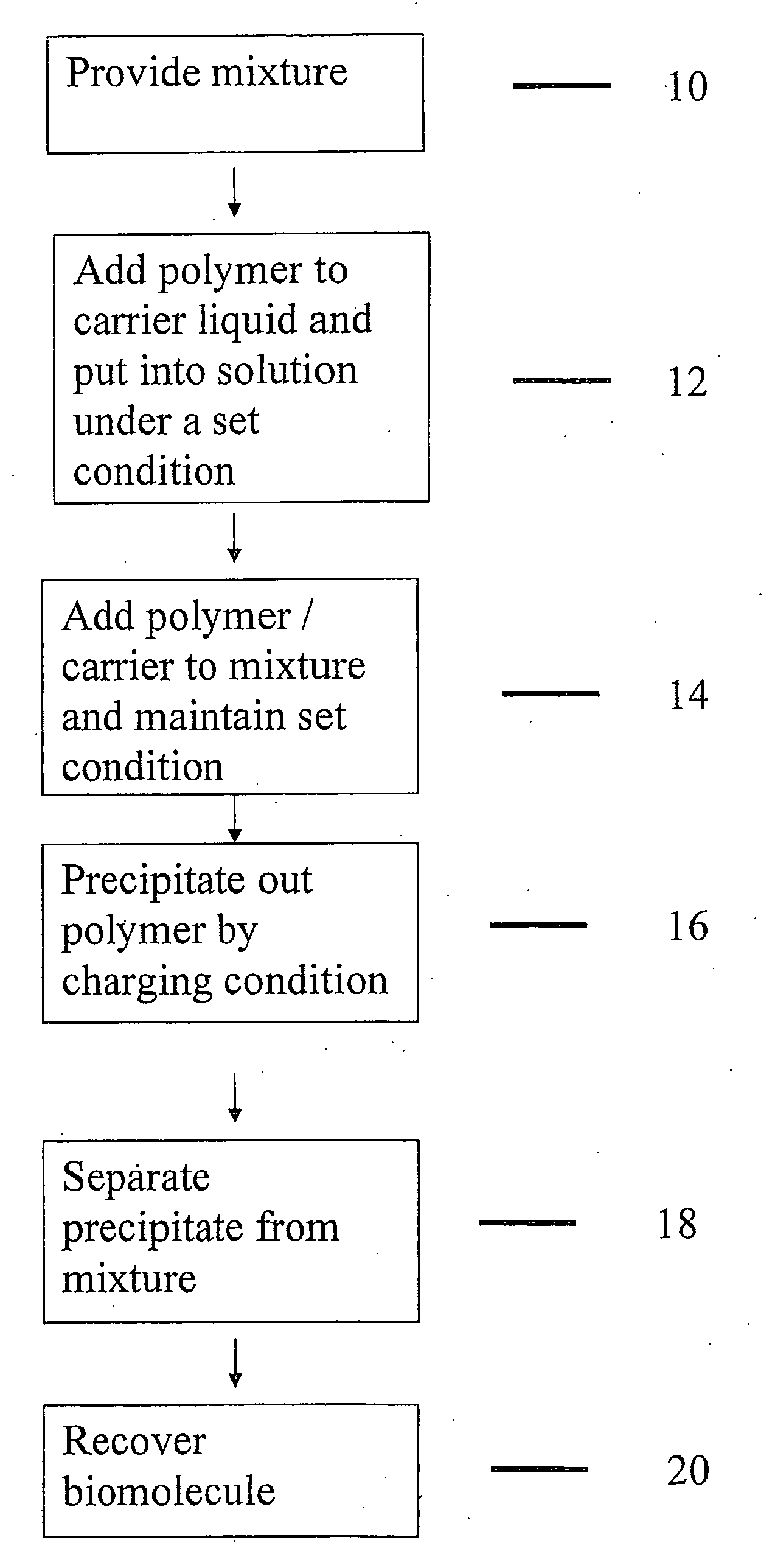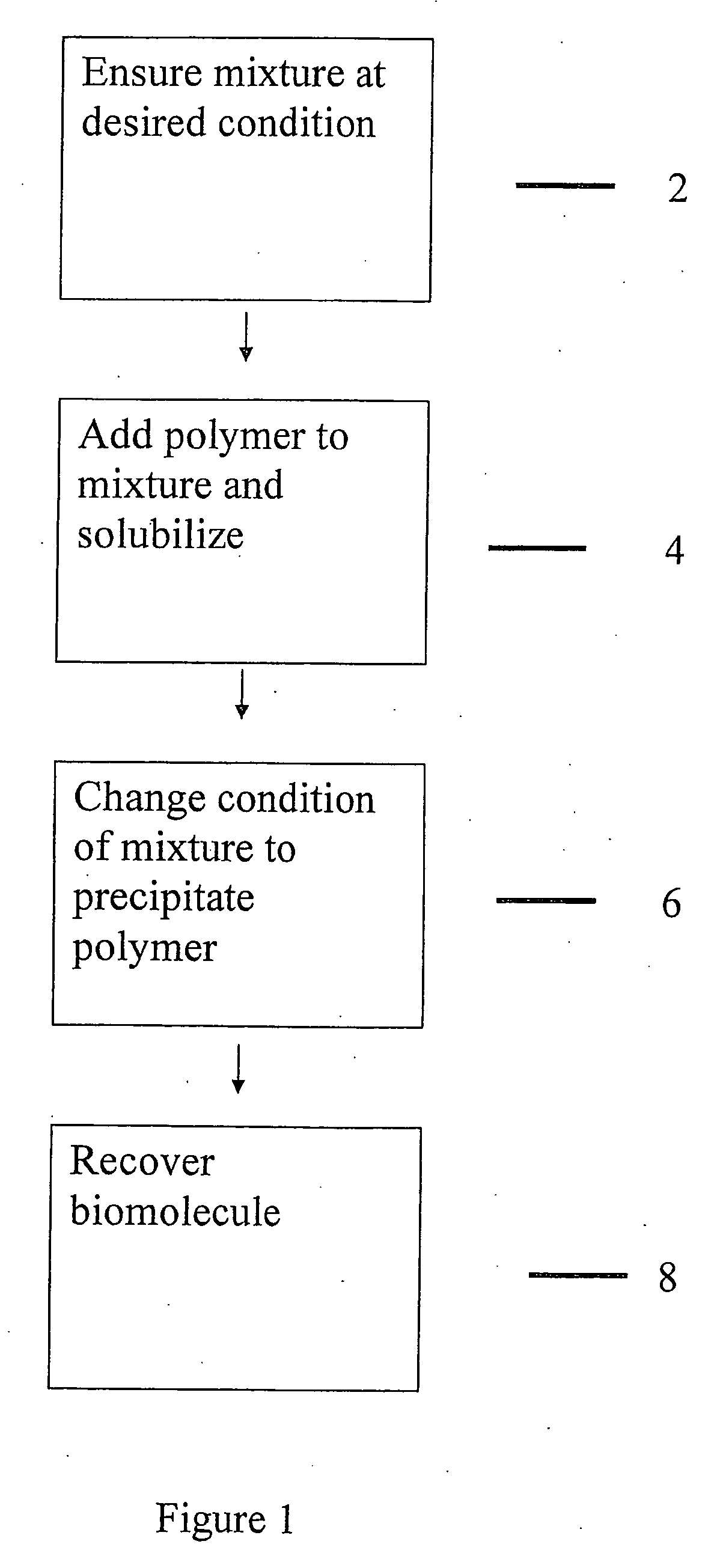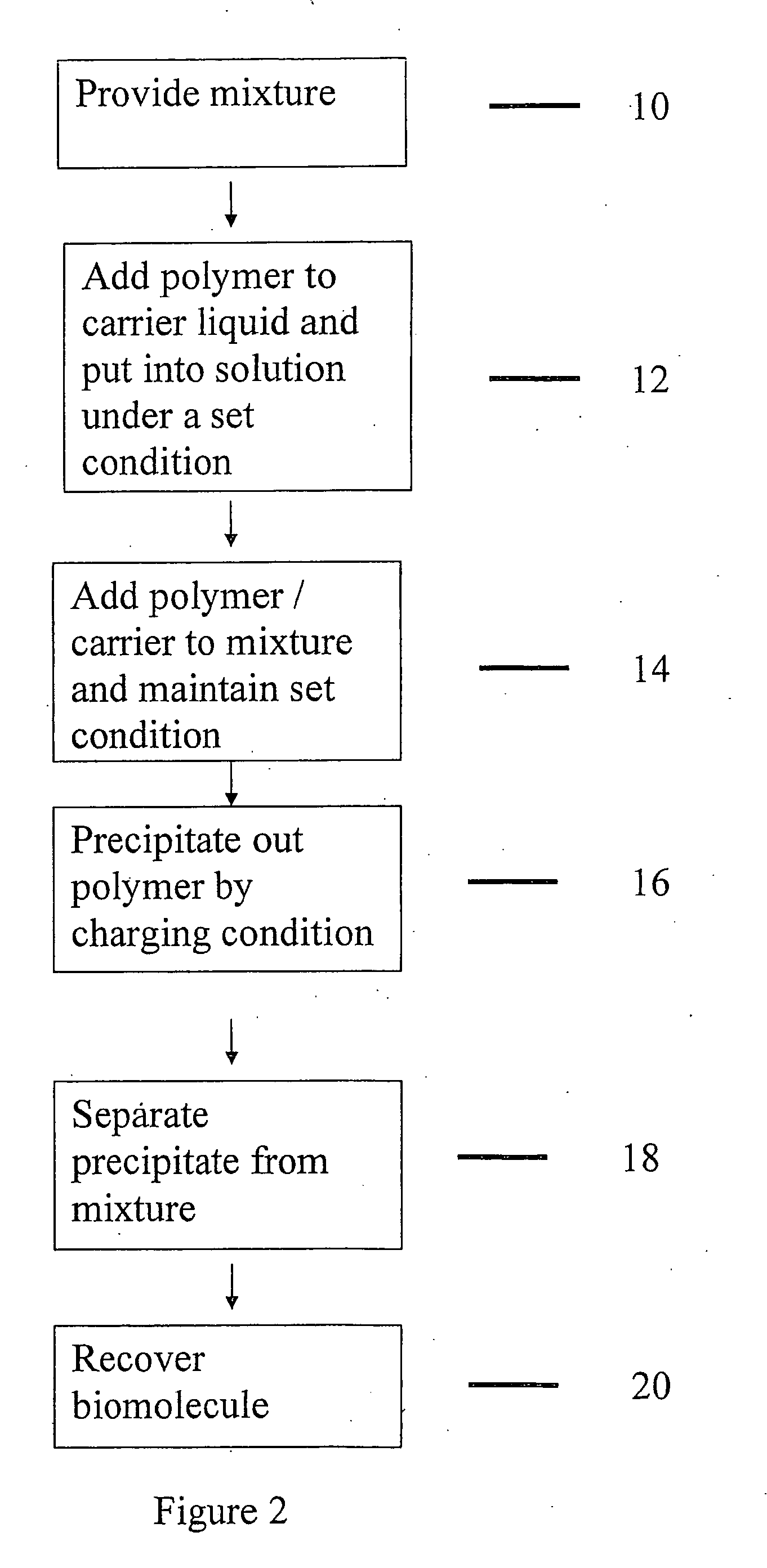Purification of proteins
- Summary
- Abstract
- Description
- Claims
- Application Information
AI Technical Summary
Benefits of technology
Problems solved by technology
Method used
Image
Examples
example 1
[0170]This Example illustrates the removal of residual 4-vinyl pyridine monomer from poly(4-vinylpyridine).
[0171]Linear poly(4-vinylpyridine), (P4VP) MW 200,000 obtained form Scientific Polymer Products, Inc., was spread evenly on a glass dish and placed in a vacuum oven. The atmosphere inside the oven was purged with argon for 5 minutes several times to remove oxygen. The pressure in the oven was reduced to 0.1 in mercury using a mechanical vacuum pump and subsequently the temperature was raised to 120° C. The polymer was subjected to these conditions for a total of 24 hours. During this time, the atmosphere inside the oven was purged with argon for 5 minutes several times. At the end of the heating period, the oven temperature was lowered to room temperature and the oven was purged with argon several times before opening the door. The resulting polymer did not have a noticeable odor, whereas the untreated polymer has a distinct odor of 4-vinyl pyridine monomer. The amount of resid...
example 2
[0172]This example illustrates the removal of residual 2-vinyl pyridine monomer from poly(2-vinylpyridine).
[0173]Linear poly(2-vinylpyridine), (P2VP) MW 200,000 obtained form Scientific Polymer Products, Inc., was treated exactly according to the process of example 1. The resulting polymer did not have a noticeable odor, whereas the untreated polymer has a distinct odor of 2-vinyl pyridine monomer.
example 3
[0174]This Example illustrates the removal of residual 4-vinyl pyridine and styrene monomers from poly(4-vinylpyridine-co-styrene).
[0175]Linear poly(4-vinylpyridine-co-styrene), (P4VP-S), 10% styrene content, obtained form Scientific Polymer Products, Inc., was treated exactly according to the process of example 1. The resulting polymer did not have a noticeable odor, whereas the untreated polymer has a distinct odor of 4-vinyl pyridine and styrene monomers.
PUM
| Property | Measurement | Unit |
|---|---|---|
| Temperature | aaaaa | aaaaa |
| Therapeutic | aaaaa | aaaaa |
| Responsivity | aaaaa | aaaaa |
Abstract
Description
Claims
Application Information
 Login to View More
Login to View More - R&D
- Intellectual Property
- Life Sciences
- Materials
- Tech Scout
- Unparalleled Data Quality
- Higher Quality Content
- 60% Fewer Hallucinations
Browse by: Latest US Patents, China's latest patents, Technical Efficacy Thesaurus, Application Domain, Technology Topic, Popular Technical Reports.
© 2025 PatSnap. All rights reserved.Legal|Privacy policy|Modern Slavery Act Transparency Statement|Sitemap|About US| Contact US: help@patsnap.com



